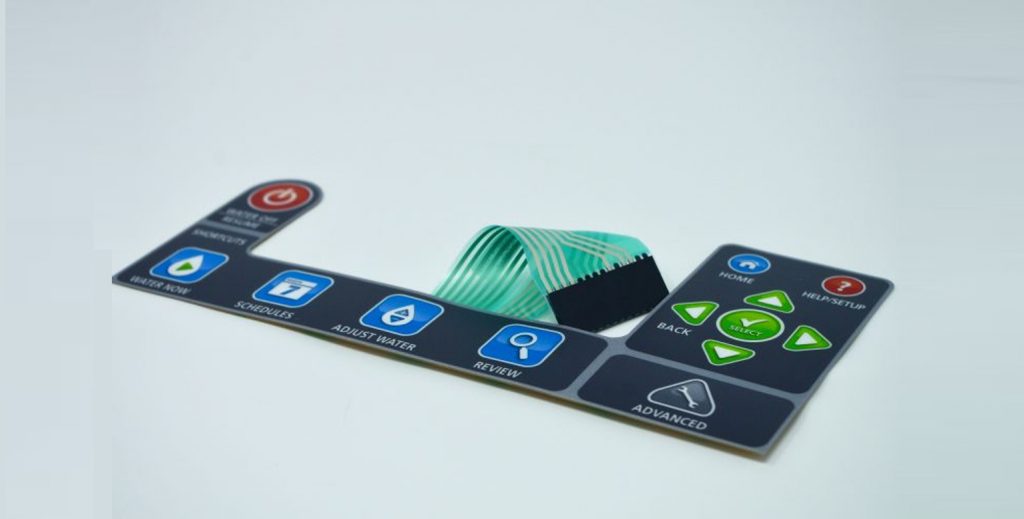Contact
Write to Us And We Would Be Happy to Advise You.
Do you have any questions, or would you like to speak directly with a representative?
By hqt

As a designer or engineer working on an interface, you know that the look and feel of your product is just as important as its functionality. You want your users to have an intuitive, easy-to-use experience that reflects your brand and meets their needs. One way to achieve this is by using backlighting membrane switches. In this article, I will discuss the benefits, applications, how they work, types, design considerations, choosing the right one, maintenance, repair, and the future of backlighting membrane switches.
Backlighting membrane switches are a type of interface that uses a layer of light to illuminate the buttons or keys. This layer is usually made of a transparent material such as polycarbonate or polyester, which allows light to pass through. The light source can be LEDs or other types of bulbs.
The primary advantage of backlighting membrane switches is that they make it easier for users to see and use the interface in low-light conditions. This is particularly useful in applications such as medical equipment, industrial machinery, and automotive dashboards, where visibility is critical.
In addition to improving visibility, backlighting membrane switches offer several other benefits. For example:
Backlighting can enhance the overall look and feel of your product. It can create a modern, sophisticated appearance that sets your interface apart from competitors.
Backlighting can make it easier for users to navigate your interface. It can provide clear visual cues about which buttons or keys to press, reducing the risk of errors.
Backlighting membrane switches are durable and long-lasting. They can withstand harsh environments and frequent use without losing their effectiveness.
Backlighting membrane switches can be customized to match your brand or product specifications. You can choose from a range of colors and designs to create a unique interface that reflects your brand identity.
Backlighting membrane switches are used in a wide range of applications, including:
In medical equipment, backlighting membrane switches are used to improve visibility and accuracy. They can provide clear visual cues about which buttons to press, reducing the risk of errors.
In industrial machinery, backlighting membrane switches are used to enhance safety and productivity. They can provide clear visual cues in low-light conditions, reducing the risk of accidents.
In automotive dashboards, backlighting membrane switches are used to improve visibility and ease of use. They can provide clear visual cues about which buttons to press, reducing driver distraction.
Backlighting membrane switches work by using a layer of light to illuminate the buttons or keys. This layer is usually made of a transparent material such as polycarbonate or polyester, which allows light to pass through. The light source can be LEDs or other types of bulbs.
When a user presses a button or key, the switch completes an electrical circuit, which triggers a response from the device. This response can be a signal to turn on a machine, adjust a setting, or perform any other action.
There are several types of backlighting membrane switches, including:
Single-color backlighting uses a single LED or bulb to illuminate the buttons or keys. This is the most basic type of backlighting and is often used in low-cost applications.
RGB backlighting uses red, green, and blue LEDs to create a range of colors. This allows for greater customization and flexibility in design.
Edge-lit backlighting uses a light guide panel to distribute light evenly across the interface. This provides a more uniform and consistent illumination.
Electroluminescent backlighting uses a thin film of material that emits light when an electrical current is applied. This provides a bright, even illumination.
When designing a backlighting membrane switch, there are several factors to consider, including:
The operating environment will affect the type of backlighting membrane switch you choose. For example, if your application is exposed to moisture or dust, you may need a switch with a sealed design to protect against damage.
The user interface should be intuitive and easy to use. This may require different backlighting colors or designs for different buttons or keys.
The backlighting membrane switch should reflect your brand identity and be consistent with your overall product design.
Choosing the right backlighting membrane switch for your application requires careful consideration of your needs and specifications. Some factors to consider include:
Consider the type of backlighting that best suits your needs, such as single-color, RGB, edge-lit, or electroluminescent.
Consider the operating environment and choose a switch with a sealed design if necessary.
Consider the level of customization you require, such as color or design options.
Backlighting membrane switches are durable and long-lasting, but they may require maintenance or repair over time. Some tips for maintaining and repairing your switch include:
Regularly clean the interface to remove dust or debris that may interfere with the backlighting.
If the backlighting stops working, it may be necessary to replace the bulbs or LEDs.
Regularly check for signs of damage, such as cracks or scratches, and repair as needed.
The future of backlighting membrane switches is bright. As technology advances, we can expect to see even more customization options, higher levels of durability, and greater flexibility in design. We can also expect to see more applications in fields such as gaming, aerospace, and consumer electronics.
Backlighting membrane switches offer a range of benefits, including improved visibility, enhanced aesthetics, and increased durability. They are used in a wide range of applications, from medical equipment to automotive dashboards. When designing a backlighting membrane switch, it is important to consider factors such as the operating environment, user interface, and brand identity. By choosing the right switch and maintaining it properly, you can ensure a long-lasting and effective interface that meets the needs of your users.
Do you have any questions, or would you like to speak directly with a representative?